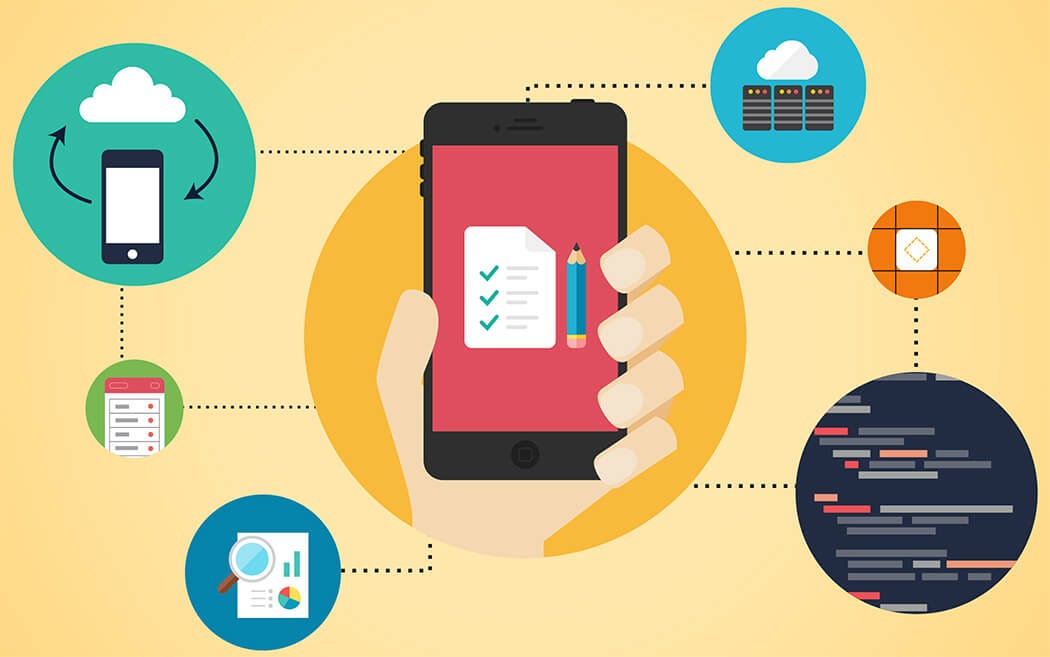
What Is the Process Of Developing A Hybrid App?
In today’s high-speed digital society, mobile applications are now a fundamental aspect of our daily routines. From ordering food and hailing a ride to managing finances and socializing, there’s an app for nearly everything. Enterprises are continually exploring avenues to engage their customers using mobile gadgets, and one option that has gained significant popularity is the adoption of hybrid app design services. This article will take an in-depth look at the complex journey of developing a hybrid app and examine the crucial stages required to deliver a smooth user experience.
What is a hybrid app?
A hybrid app brings together native and web application attributes. It combines the best of both worlds to offer a seamless user experience across various platforms, such as iOS, Android, and even the web. Unlike native apps, which are built for a specific operating system and require separate development efforts, hybrid apps rely on web technologies such as HTML, CSS, and JavaScript. They are then sealed within a native container, making it feasible to install and operate them on different platforms.
Why choose hybrid app design services?
Hybrid app design services have gained popularity for several compelling reasons:
-
Cross-Platform Compatibility
One of the primary advantages of hybrid apps is their ability to run on multiple platforms with a single codebase. This significantly reduces development time and costs, making it an attractive option for businesses looking to reach a broader audience.
-
Cost-Effectiveness
Since hybrid apps share a common codebase, maintenance and updates are more straightforward and cost-effective compared to react native app development, which requires separate coding for each platform.
-
Speedy Development
Web technologies like HTML, CSS, and JavaScript are well-established and widely known, which means development teams can leverage existing skills and libraries to create hybrid apps quickly.
-
Access to Device Features
Hybrid apps, akin to native apps, are capable of leveraging device features like the camera, GPS, and contacts. This enables developers to create feature-rich applications without sacrificing performance. If you want a hybrid app development consultation on the mobile app check link below
https://www.espinspire.com/hybrid-app-development.php
What are the steps involved in the hybrid app development process?
Now that we’ve laid the groundwork, let’s explore the step-by-step process of developing a hybrid app.
-
Define Your App’s Purpose and Scope
Before diving into development, it’s crucial to define the purpose of your app and outline your goals. Determine the problems your app will solve, its target audience, and the key features it will offer. This stage sets the foundation for the entire development process. Understanding your competitors and market trends is essential. Conduct thorough research to identify gaps in the market and find opportunities to differentiate your app.
-
Choose the Right Development Tools and Frameworks
Choosing the right development framework is a critical decision. Popular frameworks like Apache Cordova, React Native, and Flutter offer a wide range of features and support for hybrid mobile app development services, making them essential tools for hybrid app design services. Evaluate each framework based on your project’s requirements and your development team’s expertise.
-
Design the User Interface (UI) and User Experience (UX)
Generate wire framework and prototypes to provide a visual representation of the app’s design and functionality. This step helps in refining the app’s user interface and experience before development begins. Design the app’s user interface and user experience. Emphasize the creation of a design that is both user-friendly and visually attractive, aligning with your brand identity.
-
Development of the Hybrid App
Start coding the app using HTML, CSS, and JavaScript. This is where the core functionality of the app is built. Ensure that your codebase is clean, maintainable, and follows best practices. Hybrid apps often require native functionality. Utilize plugins and libraries to integrate with device features like the camera, GPS, and sensors.
-
Testing and Quality Assurance
Conduct comprehensive testing of the app across different devices and browsers to uncover and resolve any bugs or issues. Test for compatibility, performance, and usability. Consider implementing automated testing tools to streamline the testing process and ensure the app’s stability across different platforms.
-
Deployment and Distribution
Prepare your app for deployment by meeting platform-specific requirements. This includes creating app icons, splash screens, and adhering to platform guidelines. Submit your app to the necessary app stores, like the Apple App Store and Google Play Store. Follow their submission guidelines and requirements.
-
Post-Launch Activities
Build a marketing strategy to publicize your app. This may include social media marketing, influencer collaborations, and paid advertising. Gather user feedback and monitor app performance. Use this data to make iterative improvements and add new features based on user needs and preferences.
-
Maintenance and Updates
Keep your app up to date by releasing regular updates that address bugs, security issues, and compatibility with new devices and operating systems. As your app gains traction, consider scaling the infrastructure to handle increased user traffic. Optimize the app’s performance and add new features to enhance the user experience.
Conclusion
Developing a hybrid app with the assistance of professional hybrid app design services can be a rewarding endeavor when approached systematically. Through the guidance offered in this article, you can craft a cross-platform application that aligns with your target audience’s needs, all while minimizing the time and money invested in development. Embrace the hybrid advantage, and you’ll be well on your way to joining the ranks of successful app developers in today’s ever-evolving digital landscape.
Thanks for visiting Bloggerswheel



